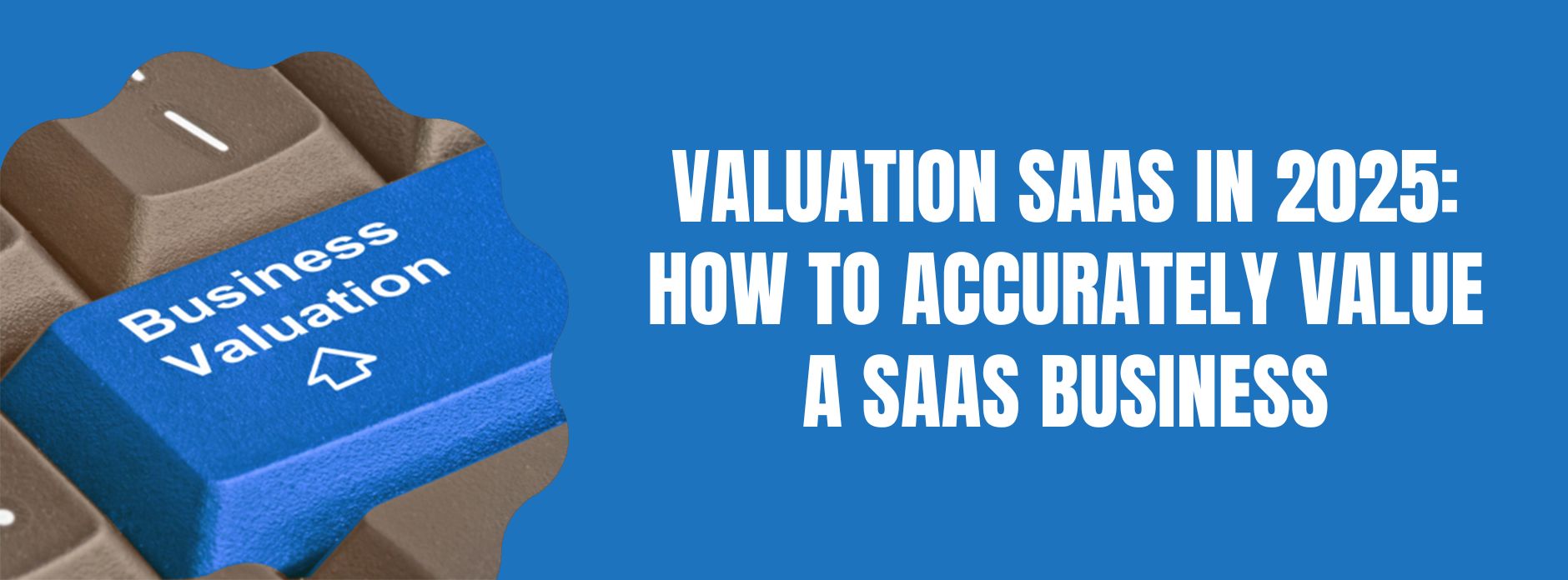Ever wondered why some SaaS companies, despite having lower growth rates, attract more investors and achieve higher valuations than their faster-growing counterparts?
The secret often lies in the Rule of 40. In this guide, we’ll reveal how this golden rule can be your company’s secret weapon for sustainable growth and investor magnetism in 2023.
Are you ready to unlock the formula that top SaaS companies swear by? Let’s dive in!
Short Summary
- The Rule of 40 is a financial framework to balance revenue growth and profitability in SaaS companies.
- It’s calculated using Annual Recurring Revenue (ARR), Monthly Recurring Revenue (MRR) & EBITDA Margin, with the goal of achieving a total above 40%.
- Strategies for exceeding the Rule include streamlining operations, focusing on customer acquisition/retention and continuous improvement/innovation.
Understanding the Rule of 40 for SaaS Companies
The Rule of 40 is a financial framework that seeks to harmonize revenue growth and profit margins in SaaS companies, making it an essential metric in the SaaS industry. It provides financial discipline in decision-making processes and helps maintain a balance between growth and profitability, contributing to a healthy SaaS company. A sum of 40% or higher in the Rule of 40 indicates a thriving business with a balance between growth and profitability, which can lead to increased free cash flow.
The Rule of 40 is determined by summing a company’s revenue growth rate (%) and its EBITDA margin (%).
- Revenue growth rate is a measure of the company’s growth in terms of its top line.
- EBITDA margin reflects the company’s ability to generate profits from its operations.
- EBITDA (earnings before interest, taxes, depreciation, and amortization) is a measure of a company’s operating profitability.

The Formula Behind the Rule of 40
The Rule of 40 formula combines a company’s revenue growth rate (either annual recurring revenue (ARR) or monthly recurring revenue (MRR)) and EBITDA margin to assess a company’s performance. The elements of the Rule of 40 formula consist of revenue growth rate (ARR or MRR) and EBITDA margin.
The Rule of 40 is determined by summing the company’s revenue growth rate (ARR or MRR) and the EBITDA margin. If the total is above 40%, the company is deemed to be performing optimally. This calculation helps companies ensure they are on track with their growth and profitability goals, ultimately contributing to their long-term success.
When to Apply the Rule of 40
The Rule of 40 is most suitable for mature SaaS companies with well-defined departments, a proven product-market fit, and consistent cash flow. Excessive concentration on the Rule of 40 during the initial phases of a SaaS business may result in strategic missteps.
Dave Kellogg has stated that targeting R40 compliance too soon can impede growth and subsequently reduce the company’s valuation due to an inability to achieve high growth.
Key Metrics for Calculating the Rule of 40
To calculate the Rule of 40, three primary metrics are used: Annual Recurring Revenue (ARR), Monthly Recurring Revenue (MRR), and EBITDA Margin. These metrics provide a comprehensive view of a company’s growth, profitability, and overall financial health, making them essential components of the Rule of 40 calculations.
Businesses can improve their business by understanding these metrics and how they are used to calculate the Rule of 40.
Annual Recurring Revenue (ARR)
ARR is a metric that is used to assess a company’s recurring revenue over the course of a year, typically in the context of Software-as-a-Service companies with longer-term contracts. ARR is a critical metric for SaaS businesses as it provides a clear view of the company’s growth and financial position. It helps measure the annual revenue generated from subscriptions or recurring contracts, which is essential for long-term sustainability.
ARR is determined by dividing the total amount of recurring revenue generated in a given year by the total number of customers. Companies can ensure they are on track to achieve their growth and profitability targets, providing a solid foundation for their long-term success, by closely monitoring and optimizing ARR.

Monthly Recurring Revenue (MRR)
Monthly Recurring Revenue (MRR) is a financial metric that indicates the total amount of revenue that a company can anticipate receiving in a given month from its subscription-based services. MRR is typically used for Software-as-a-Service (SaaS) businesses that have shorter contract durations. MRR facilitates the forecasting of future revenue, as well as the management of cash flow.
MRR is derived by dividing the total recurring revenue for a given month by the total number of customers. SaaS companies can ensure they are on track to achieve their growth and profitability targets, which contributes to their long-term success in the competitive SaaS landscape by closely monitoring and optimizing MRR.
EBITDA Margin
EBITDA Margin is a measure of a company’s profitability margin, calculated as the ratio of its earnings before interest, taxes, depreciation, and amortization (EBITDA) to its total revenue. EBITDA Margin, often considered alongside profit margin, plays a crucial role in the Rule of 40 calculations as it reflects the company’s ability to generate profits from its operations, making it an essential component of the overall assessment of a company’s financial health.
Rule of 40 Calculation Example

Let’s consider a hypothetical SaaS company with an ARR growth rate of 30% and an EBITDA margin of 15%. To calculate the Rule of 40, we simply add the ARR growth rate (30%) and the EBITDA Margin (15%), resulting in a total of 45%.
Since the sum is above 40%, the company is deemed to be performing optimally and maintaining a healthy balance between growth and profitability, adhering to the Rule of 40 guidelines.
Benefits of Implementing the Rule of 40
Implementing the Rule of 40 offers numerous benefits for SaaS companies, such as balancing growth and profitability, attracting investors, and ensuring long-term stability. SaaS companies can make informed decisions regarding their growth strategies and maintain a healthy balance between growth and profitability by utilizing the Rule of 40 as a performance evaluation tool.
Balancing Growth and Profitability
The Rule of 40 helps SaaS companies strike a balance between growth and profitability, allowing for trade-offs and informed decision-making. Companies can ensure they are on track to achieve their long-term goals while maintaining a healthy financial position by keeping both growth and profitability in check.
This approach helps to ensure that companies are not sacrificing long-term success for short-term gains.
Attracting Investors
SaaS companies can attract investors and increase their valuation for funding rounds or IPOs by meeting or exceeding the Rule of 40. The Rule of 40 serves as a reliable indicator of the balance between growth and profitability for potential investors, providing a concise KPI to evaluate the financial performance and attractiveness of a SaaS company.
Ensuring Long-term Stability
Ensuring a healthy balance between growth and profitability contributes to the long-term stability and success of a SaaS company. Companies can effectively manage their resources and make informed decisions by adhering to the Rule of 40. Ultimately, this will pave the way for a thriving and sustainable business.
Rule of 40 Benchmarks and Industry Standards

The Rule of 40 benchmarks and industry standards provide a reference point for SaaS companies to compare their performance and identify areas for improvement. SaaS companies can effectively evaluate their performance and make necessary adjustments to exceed the Rule of 40 by understanding these benchmarks and standards.
For example, a SaaS company may find that its customer acquisition costs are higher than the customer acquisition costs.
Median Performance Benchmark
The median performance benchmark for the Rule of 40 is 42, indicating a balanced approach to growth and profitability. Companies can use this benchmark as a reference point to evaluate their performance and determine whether they are meeting or exceeding the industry standard.
Companies can better assess their performance and make informed decisions about their performance by understanding the Rule of 40.
Comparing Your Company’s Performance
Comparing your company’s Rule of 40 performance to industry standards can help identify strengths, weaknesses, and opportunities for growth. You can ensure that your SaaS business remains competitive and on track to achieve long-term success by closely monitoring your company’s performance and making data-driven adjustments.
Strategies for Exceeding the Rule of 40
To exceed the Rule of 40, SaaS companies can employ various strategies, including streamlining operations, focusing on customer acquisition and retention, and continuous improvement and innovation, all of which contribute to rapid growth.
SaaS companies can effectively balance growth and profitability, attracting investors, and ensuring long-term stability by implementing these strategies.
Streamlining Operations
Streamlining operations and optimizing processes can help SaaS companies improve efficiency, reduce costs, and increase profitability. Companies can optimize their operations, ultimately contributing to their ability to exceed the Rule of 40 by eliminating inefficiencies, automating tasks, and enhancing customer service.
This rule states that a company’s annual recurring revenue should be at least 40% of its annual revenue.
Focusing on Customer Acquisition and Retention
Focusing on customer acquisition and retention strategies can drive revenue growth and improve customer lifetime value. SaaS companies can attract new customers and retain existing ones, ultimately driving growth and exceeding the Rule of 40 by offering discounts and promotions, delivering exceptional customer service, and producing engaging content.
These strategies can be implemented in a variety of ways, such as through email campaigns, social media, and more.
Continuous Improvement and Innovation
Continuous improvement and innovation in product offerings, services, and business models can help SaaS companies, as well as software companies, stay competitive and exceed the Rule of 40. SaaS companies can ensure they are meeting the evolving needs of their customers and staying ahead of industry trends by constantly refining products, services, and processes.
This can be achieved through a combination of customer feedback, market research, and experimentation. Companies should be able to afford it.
Summary
In conclusion, the Rule of 40 is a powerful metric that helps SaaS companies strike the right balance between growth and profitability.
SaaS companies can optimize their performance, attract investors, and ensure long-term stability by understanding key metrics, benchmarks, and industry standards, as well as employing strategies for exceeding the Rule of 40. Companies can pave the way for a thriving and sustainable SaaS business by implementing the Rule of 40.
Frequently Asked Questions
What is software rule of 40?
The Rule of 40 is a principle that states a software company’s combined revenue growth rate and profit margin should be equal to or exceed 40%. This metric has become popular in recent years as a high-level gauge of performance for software businesses, and companies that meet or exceed this benchmark are typically viewed as more sustainable and profitable.
The Rule of 40 is a useful tool for investors and executives to quickly assess the health of a software business. It can also be used to compare companies in the same industry and identify potential areas of improvement. Additionally, it can be a good thing.
What is software multiples rule of 40?
The ‘Software Multiples Rule of 40’ is an easy calculation of adding a company’s revenue growth rate and EBITDA margin for a given period to determine the health of their software/SaaS business.
The resulting number should be at least 40%.
What is the 3 3 2 2 2 rule of SaaS?
The 3,3,2,2,2 rule for SaaS companies states that after starting from a material baseline of over $1 million in annual recurring revenue, businesses need to triple their annual revenues for two consecutive years and then double them for aggressive growth.
This rule is a great way to measure the success of a SaaS company and can be used to set goals and track progress. It is also a great way to benchmark against other companies in the same industry. Companies can ensure that they are on track for long-term success by following this rule.





